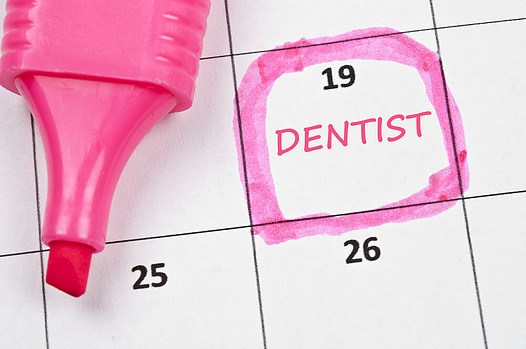
Dental anxiety is a familiar topic for many parents. We as parents must have all seen it in the “flutter of little hearts” and the “firm grip on a favorite toy” as you walk into a dentist’s office. I am going to level with you on this one regarding what this anxiety means for children and why addressing it is more critical than you might realize. This is because, dental anxiety can be a significant barrier to a child’s oral health, potentially shaping their attitude toward dental care for a lifetime.
You will come to find out that this goes beyond jittery nerves. The overarching influence anxiety can have on a child’s willingness to attend dental appointments, can potentially lead to poor oral hygiene in the future. Speaking of the statistics, it is clear that dental anxiety is no small challenge; it is a widespread cause of concern with real effects on health.
So, what are the signs? Look for clues like sleepless nights before a dental appointment, a sudden onset of physical complaints, or an outright refusal to sit in the dentist’s chair.
This is not a challenge you have to face alone as a parent though. There is plenty of guidance available to effectively address this problem for your child. And remember, every journey begins with understanding, and that’s where we are going to start. Now, don’t worry too much about this stage; as always, I am here to guide and help you through every step of the way.
Laying the Foundation: The Importance of Early Dental Visits
I am going to share my thoughts and opinion now: dental anxiety is not something kids have to live with. Laying a solid foundation early on is key to preventing those jitters in the first place.
You might be wondering, ‘Hang on…How early are we talking here?’ Well, dental professionals recommend scheduling your child’s first visit by their first birthday. This might sound surprisingly early, but trust me, I see this as a very strategic move. It’s all about familiarization and sensitization (or sensitization, whichever is the way you prefer to look at it)!
When dental offices become a normal part of their world from the get-go, there’s less room for fear to grow.
So, you are probably thinking about how to prep for this daunting time which will inevitably present itself soon. My advice is simple: keep it light and positive! Talk about the dentist as a friend who helps keep their smile shiny and strong. Maybe do a walk-by of the clinic to spike some curiosity. Let them know that this is a regular part of growing up, just like learning to tie their shoes. And whatever you do, avoid painting dentists as the ‘bad guys’ in negotiations when trying to get your kids to clean their teeth.
You’re also going to find out that creating a positive narrative is “super powerful”. The stories you tell about your own dental experiences can color their expectations. So if you’re someone who gets anxious about your visits, try to keep those tales out of their earshot. Children pick up on parents’ emotions, after all. Now, as we ease into the idea of choosing the right pediatric dentist, remember that these initial visits set the stage. You want them to associate dental care with comfort and safety, not the stuff of Halloween tales.
Selecting the Right Pediatric Dentist For Your Child

Choose a pediatric dentist if you’re looking for a new member of your child’s healthcare team. After all, that’s exactly who they’ll become. Pediatric dentists have specialized training to address the unique needs of children, making them an ideal choice for your little one’s dental care.
When you’re on the search for the right dentist, consider their varied approaches to treating children, especially those with dental anxieties. Seek out a dentist who has a proven track record of creating a welcoming, child-friendly environment. This could include a waiting area with toys and books, child-sized dental chairs, and a team that uses child-friendly language.
Don’t shy away from asking potential dentists about their experience with anxious patients. It’s crucial to choose someone who is not only skilled at pediatric dentistry but who is also adept at easing fears. They should offer a calm, patient demeanor and a bag of tricks for making the dental visit feel like a breeze for nervous children.
Involving your child in the choice can also be helpful. Some dentists may allow a pre-visit where your child can meet them, receive a ‘ride’ in the dental chair, and get a feel for the environment. This early introduction can build trust between your child and the dentist before any procedures take place.
Remember, the goal here is to build a lasting relationship with a kind and empathetic dentist where your child feels safe and understood. So don’t rush the process. If possible, meet with several pediatric dentists to find the one that clicks with both you and your child.
Playful Preparation: Role Playing and Storytelling
Now, I’m going to walk you through a surprisingly powerful tool in your arsenal: role-play with a dash of storytelling. Picture this: your living room transforms into a miniature dental clinic, with stuffed animals patiently waiting for their checkup. Turns out, playtime isn’t just fun — it’s an opportunity to teach and calm nerves.
Engage your child in pretend play, where they can be both the dentist and the patient. This not only acclimates them to the idea of sitting in the dental chair but also gives them an inkling of control over the situation. You might even discover that your child is a natural when it comes to wielding a pretend drill!
Tap into the creative world of children’s books and videos that put a whimsical twist on dental care. Characters in these stories often overcome their anxieties, which sends a reassuring message to the young ones.
This approach is about making the unknown known. If you can help your child understand the sequence of events in a dental visit through play and stories — from the waiting room to the prize at the end — they might just start to see these visits in a different light.
In my opinion, the key is to keep it light and engaging. Use storytelling to answer questions and address any misconceptions they may have picked up. This isn’t just about play; it’s also about opening a dialogue with your child. Plus, stories have this knack for sticking in our heads — think of them as gentle, memorable lessons. that’s the strategy I like to leverage – it sets the stage for the next section, where we’ll explore larger educational tools like children’s books and videos on the subject.
And remember, it’s not just about having fun; it’s about creating a safe space for questions. Kids are curious by nature, and explaining things through the lens of play can often lead to those ‘aha’ moments where understanding dawns and fear dissipates.
Mastering Calm: Relaxation Techniques for Anxious Moments
If you want to ease your child’s nerves before a dental appointment, relaxation techniques can be a game-changer. Teaching your little one how to stay calm can make a world of difference not only in the dental chair but in many other areas of life too.
Deep breathing is a simple yet effective tool. I’m going to show you how you can make it fun for kids. Have them blow up an imaginary balloon or make bubbles in a bowl of water with a straw. This entertaining approach will engage your child and help take their mind off their anxiety.
Now, focusing on counting is another trick that works wonders. Turn it into a game where your child counts their breaths, the number of tiles on the ceiling, or the different colors they see in the room. Before they know it, the appointment could be over.
It’s crucial to practice these techniques at home first. Just like you wouldn’t run a marathon without training, don’t expect your child to master relaxation without practice. Start by incorporating these exercises into your daily routine, so they become second nature.
Guess what? The cool thing about relaxation is that it pairs well with gradual exposure, which we’ll dive into next. It’s about taking small, manageable steps to help your child become more comfortable with the dental environment over time.
Re-enforcing Bravery and Building Confidence: Learn To Celebrating All Dental Victories

I’m going to wrap up this guide by emphasizing the importance of celebrating every little triumph on your child’s journey to overcoming dental anxiety. Remember, every courageous step they take is worth acknowledging.
Choose something that resonates with you and your child as a form of praise—whether that’s a sticker, an extra bedtime story, or a special outing. This isn’t just about rewarding them; it’s about reinforcing their positive actions and building their confidence for future visits.
You’re going to find out that with consistent support and the right incentives, your child’s apprehension can transform into a sense of accomplishment. And that’s going to include their pride in taking care of their dental health—something that benefits them for a lifetime.
In my opinion, the ultimate goal is a child who views dental care as a normal, even enjoyable part of life, rather than something to fear. So, if you want to help your child develop a healthy relationship with dental care, don’t worry too much about the time it takes. You can always adjust your approach down the road as you both learn what works best.
I hope that these strategies not only ease your child’s dental visits but also enrich your family’s overall approach to health and well-being. There’s a lot of opportunity to foster these habits early on, and I am here anytime to help you every step of the way.
